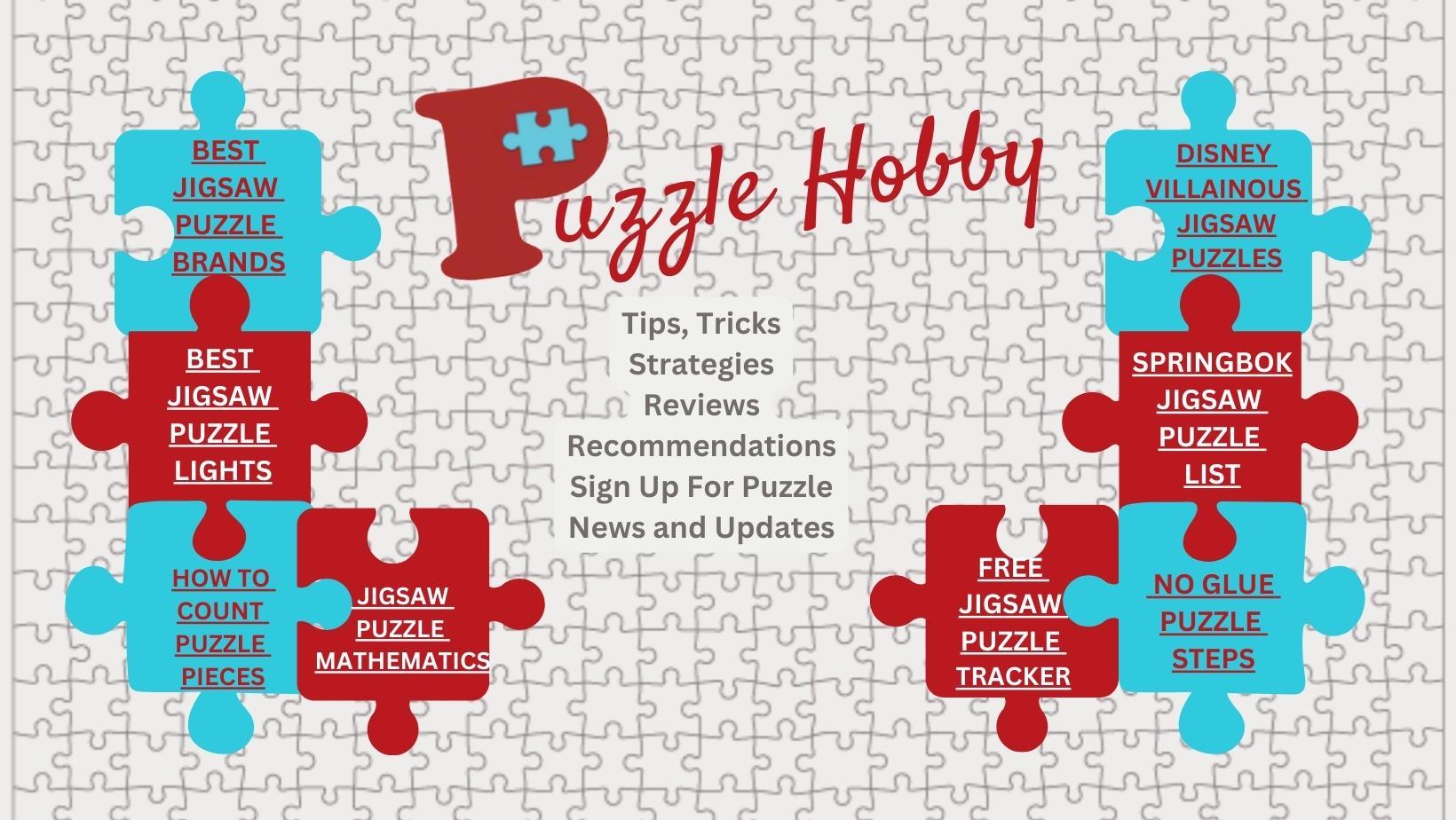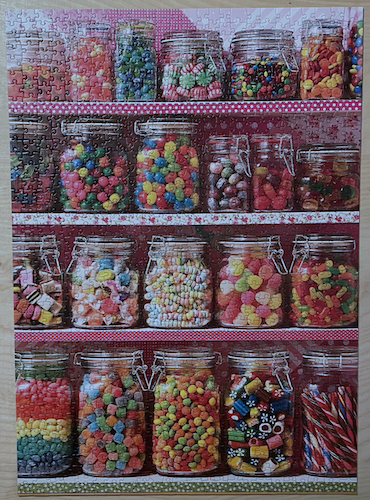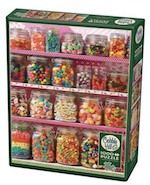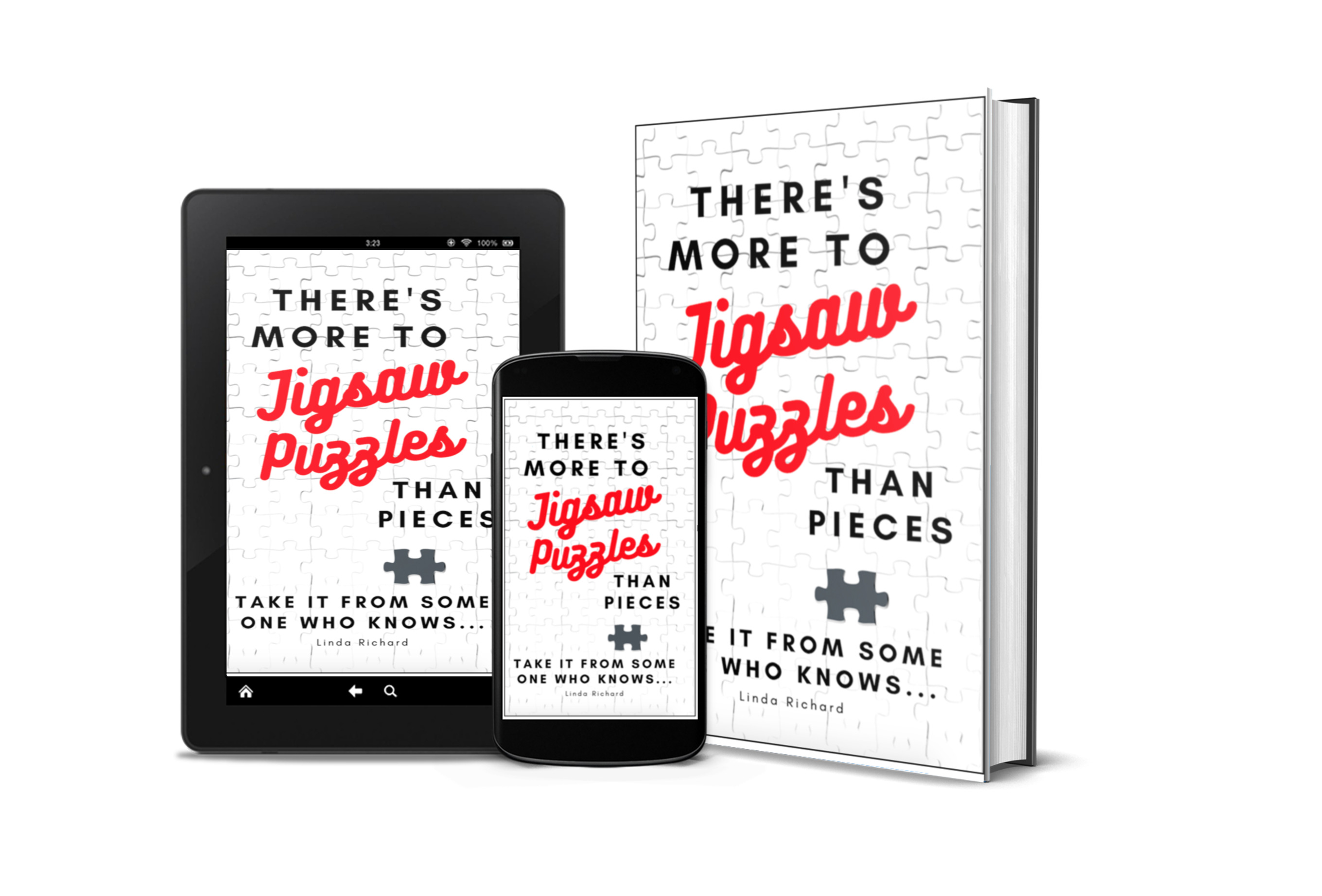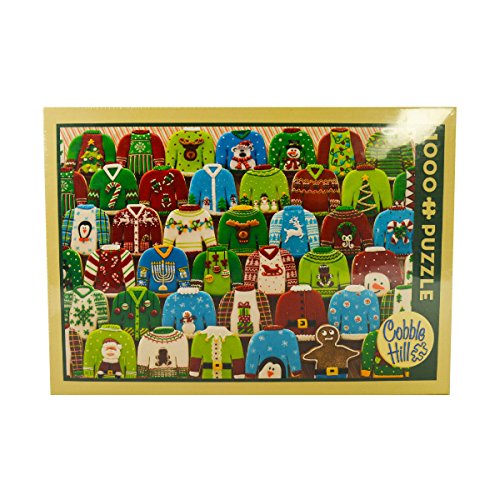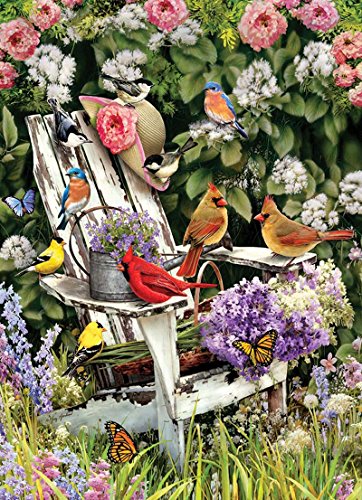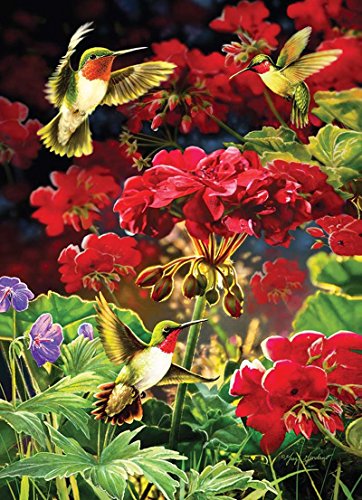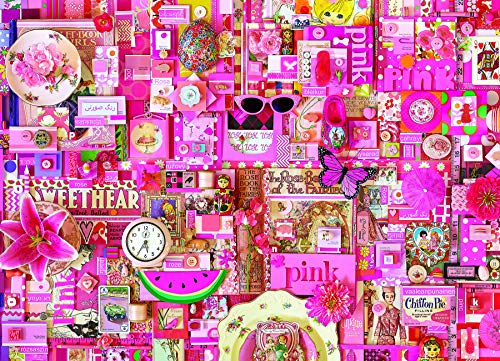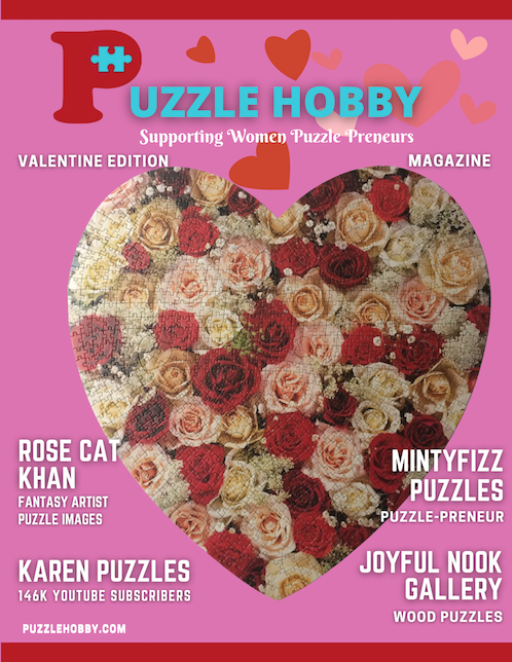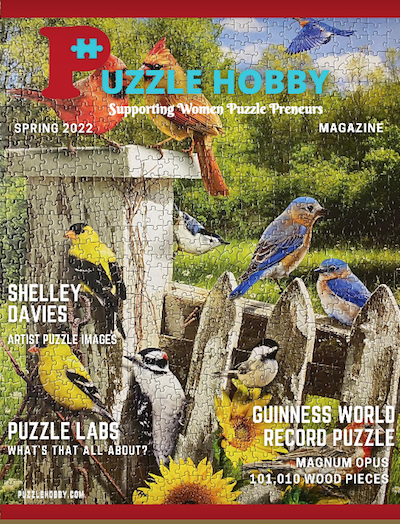 |
 |
- FAQ's 100 Questions
- Best Puzzle Brands
- Activities/Accessories
- Best Puzzle Lights
- Sponsored Reviews
- Sales l Giveaways
- Reap the Benefits
- Get Your Game On!
We are a participant in the Amazon Services LLC Associates Program, an affiliate advertising program designed to provide a means for us to earn fees by linking to Amazon.com and affiliated sites. Also, some of our posts contain other affiliate links and we will be compensated if you make a purchase after clicking on our links.


Candy Shelf Puzzle
by Guest Writer Roberta Shore
We invite you to read Roberta Shore's review on the 'ever-so-popular' Candy Shelf puzzle by Cobble Hill Puzzle Company. You may like this 500 pieces image Amazon link
 |
Cobble Hill jigsaw puzzles |
My (advancing) Newbie difficulty rating: Advanced
What was I thinking?! Puzzles can be challenging. Personally, I don’t think they have to be to enjoy a puzzling experience, but I don’t mind taking on a challenge that I think I will also enjoy. Because, the experience should also be fun.
I cannot imagine how I decided to own this puzzle when I chose it only a couple months into my new hobby! To this day, when I see an illustration I like, my first criteria is being able to sort it in a way that comfortably benefits the fun part — putting it together. Did I really think I could sort the candy jar by jar? Apparently so. Did I notice that every jar top looked almost the same? Apparently not.
So, how did I sort this? Find the edge pieces and sort by color? Not exactly. What I did sort separately the first go round were the decorative shelf edges, the glass tops, the jar closures, the background patterns, and the darkest shadows. (See end note)
Construction: I built the frame, ran the shelf edges across, filled in the wallpaper background. Now I had some jar bottoms and part of some jar tops in place, some other sorted pieces and SIX sort trays of mixed up candy, mostly in one layer. Yikes — well, let’s get started.
To be honest I didn’t have the energy to try to sort gum balls from jelly beans, but I did pick out most of the mixed candy in jar #4 in the bottom row. Well, keep going, you can do this! Jars got filled and lastly, topped off and sealed tight. I did sort those last pieces by shape, color tone and whether or not there was metal on them. Thing is the build was arduous and required a lot of time and patience while fun factor was definitely missing. Sad.
Okay, I felt accomplished when it was complete, and happy that I persevered. It was just not my kind of puzzle to do. Now, if not back a few months ago, I would call this puzzle “busy”. I shy away from that. I prefer to ponder over large areas of similar color, even declare that chore fun, where others say they hate it. And no, I have no interest in doing a solid color puzzle with no illustration to enjoy when the task is done.
To each their own, for sure. And I can recommend this and other Cobble Hill puzzles whole heartedly. They are random cut rather than ribbon cut - another thing for personal taste, and, oh gosh, I like them both.
Quality: The oversized box includes a sealed bag of pieces and a poster. Color match was excellent on box top and enclosure pics. No puzzle dust. Pieces have a slight sheen. They are sturdy, none were together uncut, none were damaged in any way, and none were missing. Now becoming a common complaint across brands — loose piece fit. Pieced sections, even just a few pieces, fell apart.
Final thoughts: I know I’m not fond of puzzles like this, but If you are new to puzzling, I still think advanced is a fair rating. Any puzzle, with time and patience, could be completed. Don’t start with this one, but do try to choose different types that appeal to you. Consider the puzzling mantra “Find the edge pieces and sort by color” when deciding.
My ratings: Quality A-, Fun Factor (for me) C+
Note: My usual sort order is a bit more traditional. I do find edge pieces and sort by color. Then I build the frame and do sub sorts for areas of color and objects in the puzzle. Finding all the edge pieces is more likely to happen when not concentrating on such details. Trust me on that!
- Best Quality Jigsaw Puzzles
- 43 Best Jigsaw Puzzle Brands
- 5 Best Jigsaw Puzzle Lights
- 11 Best Jigsaw Puzzle Tables
- 23 Best Jigsaw Puzzle Mats
- 85 Best Shaped Jigsaw Puzzles
- 29 Disney Villainous Jigsaw Puzzles
- Best Jigsaw Puzzles Scoops
- Best Jigsaw Puzzle Glue
- No Glue Method for Puzzles
- 115 Cobble Hill Jigsaw Puzzles
- 33 JaCaRou Jigsaw Puzzles
- 9 WerkShoppe Jigsaw Puzzles
- 5 Grateful House Jigsaw Puzzles
- 95 Eurographics Jigsaw Puzzles
- 7 Hennessy Jigsaw Puzzles
- 11 Ceaco Jigsaw Puzzles
- 29 Cloudberries Jigsaw Puzzles
- 2 Wentworth Jigsaw Puzzles
- _______Advertisement_______
We have collected a massive list of jigsaw puzzles in numerous categories on our Amazon Store link. It's a quick way to browse most current puzzles and/or specific seasons, accessories and themes. Makes for a terrific one-stop jigsaw puzzle gift giving shopping centre. CLICK HERE
You may also like to see these Cobble Hill Jigsaw Puzzles
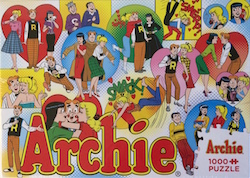 COBBLE HILL Classic Jigsaw Puzzle (1000 Piece) COBBLE HILL Classic Jigsaw Puzzle (1000 Piece) |
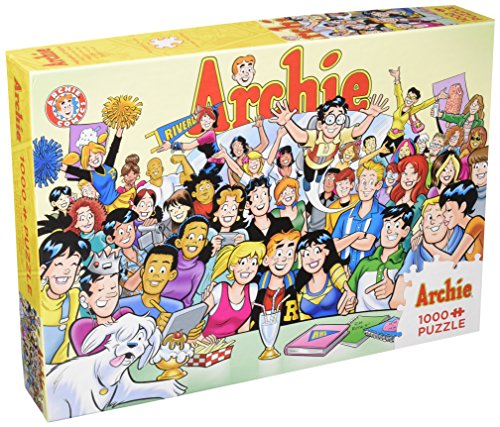 COBBLE HILL the Gang At Pop's Jigsaw Puzzle (1000 Piece) COBBLE HILL the Gang At Pop's Jigsaw Puzzle (1000 Piece) |
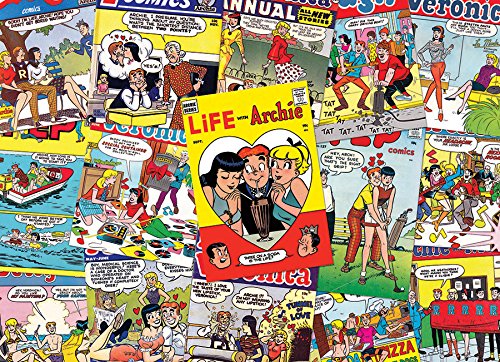 COBBLE HILL Jigsaw Puzzle (500 Piece) COBBLE HILL Jigsaw Puzzle (500 Piece) |
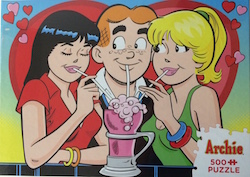 Archie Love Triangle jigsaw puzzle Archie Love Triangle jigsaw puzzle |
 Gingerbread Houses Gingerbread Houses |
 Cobble Hill Noah's Gathering 400 Piece Family Puzzle Cobble Hill Noah's Gathering 400 Piece Family Puzzle |
 COBBLE HILL Family Puzzle (350 Piece) COBBLE HILL Family Puzzle (350 Piece) |
About: Mastering the Art of Choosing the Right Jigsaw Puzzle
Tips to Avoid Buying Overwhelmingly Difficult Images
Jigsaw puzzles offer a delightful challenge, but there are times when the level of difficulty can be overwhelming. Whether you're a seasoned puzzler or a novice looking for an enjoyable experience, it's important to choose the right puzzle image that matches your skill level and personal preferences. In this article, we'll explore the world of difficult jigsaw puzzles and provide you with a list of tips to help you avoid buying images that might leave you feeling frustrated.
1. Know Your Skill Level
Understanding your own puzzle-solving skills is key when selecting a jigsaw puzzle. Be honest with yourself about your experience and comfort level. If you're a beginner, it's best to start with puzzles that have a lower piece count and simpler imagery. As you gain confidence and experience, you can gradually challenge yourself with more complex puzzles.
2. Consider the Piece Count
The number of puzzle pieces directly affects the difficulty level. Larger piece counts, such as 1,000 pieces or more, can be more time-consuming and mentally demanding. If you prefer a less challenging experience, opt for puzzles with smaller piece counts, such as 500 pieces or even fewer.
3. Analyze the Imagery
Before purchasing a puzzle, carefully examine the image. Complex and intricate designs, such as landscapes with numerous details or abstract patterns, tend to be more challenging. If you're looking for a less daunting puzzle, choose images with clearly defined sections, distinct colors, or simpler motifs.
4. Read Product Descriptions and Reviews
Take the time to read product descriptions and reviews. Puzzle manufacturers often provide information about the level of difficulty, which can help you make an informed decision. Additionally, reading reviews from other puzzlers can give you insights into the puzzle's complexity and whether it aligns with your preferences.
5. Look for Beginner-Friendly Collections
Many puzzle companies offer collections specifically designed for beginners. These collections often feature puzzles with larger pieces, simpler imagery, or even hints and guidance to assist you along the way. Exploring these beginner-friendly options can be a great way to ease into the world of jigsaw puzzles.
6. Seek Variety in Piece Shapes
Some puzzles feature unique piece shapes that can add an extra layer of difficulty. If you're looking for a more accessible experience, consider puzzles with standard grid-shaped pieces. However, if you enjoy a challenge, look for puzzles with irregular or whimsical piece shapes, as they can make the assembly process more complex and engaging.
7. Check for Puzzle-Specific Features
Certain puzzle manufacturers offer features to indicate the level of difficulty. For example, some puzzles may have a "difficulty rating" on the packaging or specify whether they are suitable for beginners, intermediate puzzlers, or advanced enthusiasts. These indicators can be valuable in making an informed decision.
8. Consider Collaborations with Artists
Many jigsaw puzzle companies collaborate with renowned artists, resulting in a wide range of puzzle images with varying levels of difficulty. Some artists may have a distinctive style that makes their puzzles more challenging, while others may focus on creating accessible and enjoyable designs. Research the artist's work and style to ensure it aligns with your preferences and skill level.
9. Seek Recommendations from Fellow Puzzlers
Engaging with the puzzle community, whether through online forums, social media groups, or local puzzle clubs, can provide valuable insights and recommendations. Experienced puzzlers can share their thoughts on specific puzzle images and brands, helping you make informed choices.
10. Trust Your Instincts
Ultimately, trust your instincts and choose puzzles that genuinely spark joy and interest for you. While it's important to consider the difficulty level, it's equally crucial to select images that you find visually appealing and personally satisfying. Enjoying the process of assembling a puzzle is just as important as the challenge itself.
By following these tips, you'll be better equipped to choose jigsaw puzzles that match your skill level and provide an enjoyable experience. Remember, puzzles should be a source of relaxation and fun, so don't be afraid to explore different options and challenge yourself while staying within your comfort zone. Happy puzzling!
(ChatGPT, personal communication, June 20, 2023)
- Home
- Summer-birdhouse-jigsaw-puzzle
- Picket-Fence-Party-jigsaw-puzzle
- Candy-shelf-puzzle
